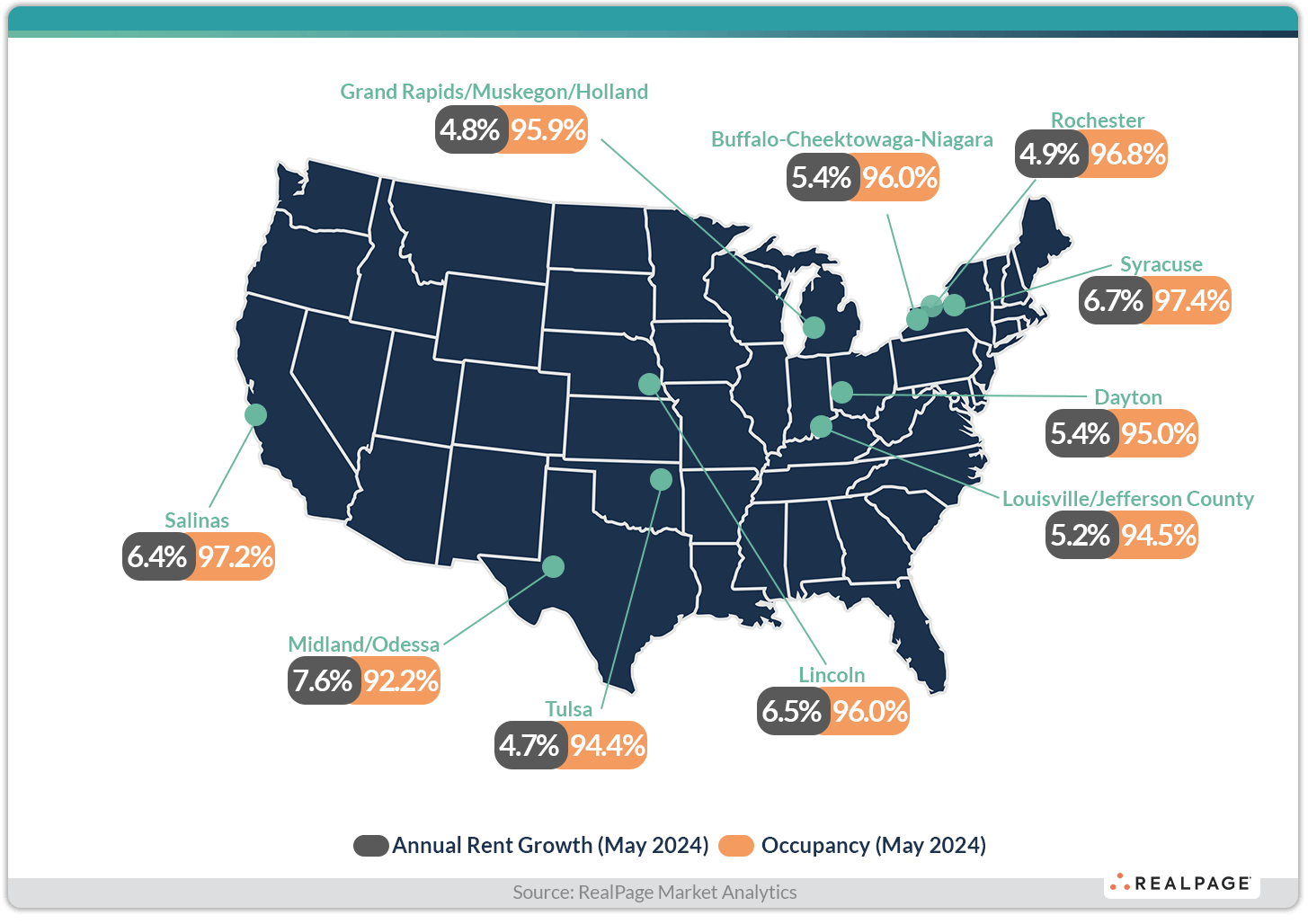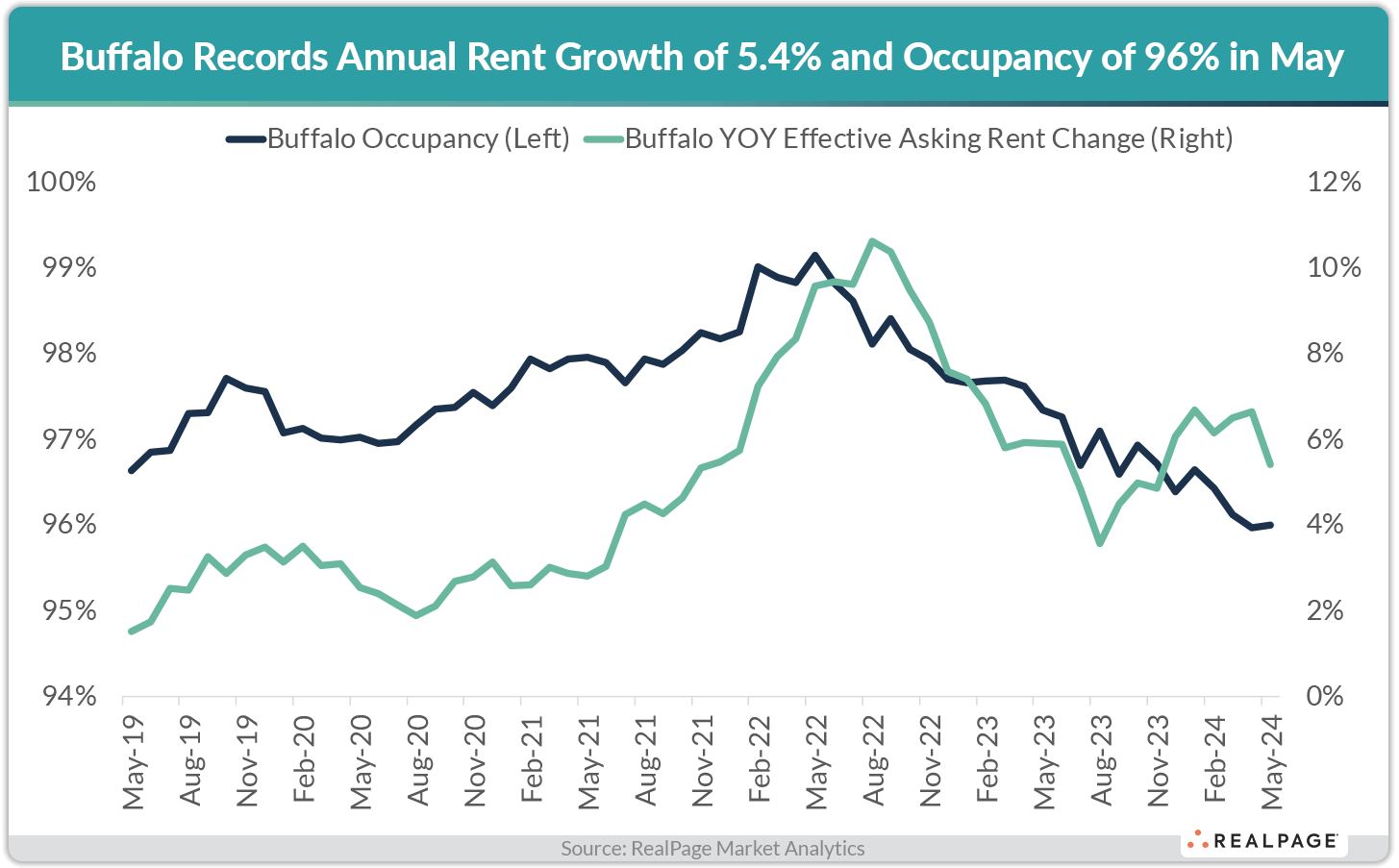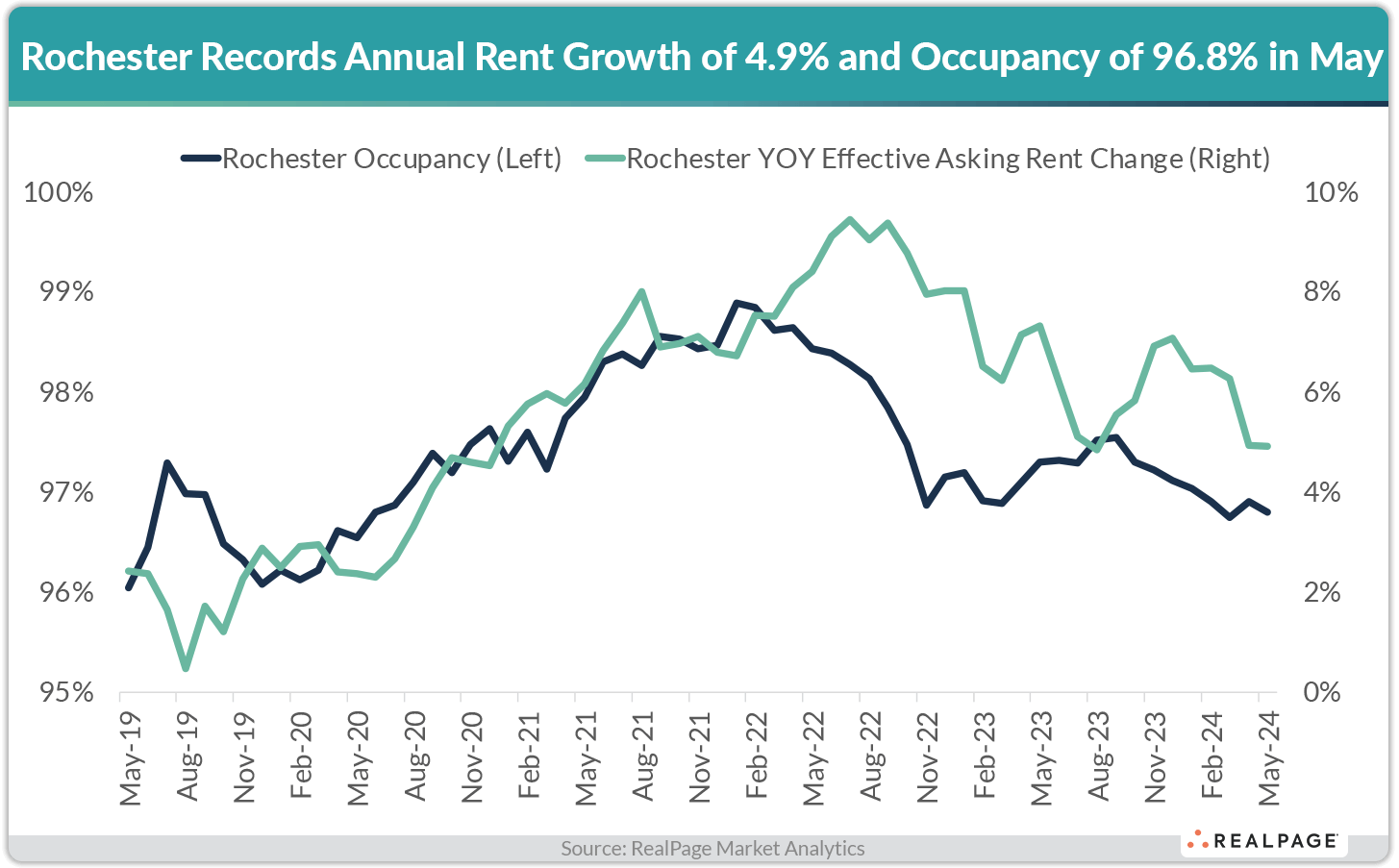Three Small New York Markets Among Nation’s Rent Growth Leaders

Small markets monopolized the nation’s rent growth leaderboard over the last year and three of the top 10 markets were in New York.
Among the nation’s 150 core apartment markets, 22 recorded rent growth of more than 3.5% in the year-ending May 2024, according to data from RealPage Market Analytics. All those 22 markets were either secondary or tertiary markets. For comparison, the U.S. overall averaged an annual rent increase of just 0.2% in May.
Looking at just the top 10 rent growth performances over the past year, New York markets took three spots. Syracuse, Buffalo and Rochester recorded rent growth of roughly 5% to 7% in the year-ending May 2024. In addition, those three markets also ranked in the top 25 for occupancy performances among the core 150 markets in May.
Those small New York markets are all situated along IH-90 in the northwest portion of the state. Rochester sits equidistant between Buffalo (to the west) and Syracuse (to the east), with only 150 miles separating the two outer markets. The closest major markets to that trio are New York, Pittsburgh and Cleveland. Syracuse is about 250 miles northwest of New York City and Buffalo is roughly 200 miles northeast of Pittsburgh and Cleveland.
Syracuse, with nearly 43,000 existing units, is the nation’s 96th largest apartment market. Syracuse logged annual rent growth of 6.7% as of May, a performance that ranked second nationally, behind only Midland/Odessa. Prior to the pandemic (in the 2015-2019 time frame), rent growth in Syracuse averaged much lower at 2.4% annually. As of May, occupancy in Syracuse registered at 97.4%, tying with Champaign-Urbana, IL to lead the nation’s 150 largest markets. Syracuse’s May occupancy reading was 320 basis points (bps) above the national average (94.2%) and 80 bps above the market’s five-year average leading up to the pandemic (96.6%).
Buffalo is the nation’s 69th largest apartment market with nearly 65,500 existing units. The market posted a 5.4% increase in effective asking rents during the year-ending May 2024, the fifth largest increase nationally and well above the market’s five-year pre-pandemic average of 2.3%. As of May, apartment occupancy in Buffalo registered at 96%, a top 25 performance nationally and 80 bps above Buffalo’s average in the five-years leading up to the pandemic (95.2%).
Rochester, with roughly 69,000 existing units, is the 66th largest apartment market among the nation’s core 150 markets. During the year-ending May 2024, Rochester posted a 4.9% increase in effective asking rents, the eighth largest rate hike nationally and well above the market’s five-year pre-pandemic average of 2.3%. Occupancy in Rochester has historically been tight, rarely dipping below the effectively full mark of 95%. As of May, apartment occupancy in Rochester registered at 96.8%, a top 10 performance nationally. That recent occupancy rate was 140 bps above Rochester’s average in the five-years leading up to the pandemic (95.4%).
Part of the reason rent growth and occupancy have been so strong in these small New York markets is that development has been very limited. Over the past five years, the number of existing units in Buffalo increased 3.5%, followed by Rochester at 2%. Syracuse’s existing inventory grew at an even milder rate of 0.5% over the past five years. That compares to the national average increase in existing units of 10.3% during that five-year period. Most recently, Buffalo, Rochester and Syracuse each recorded inventory growth of less than 0.5% in the year-ending 1st quarter 2024, ranking in the bottom 15 performances among the nation’s 150 largest markets. For comparison, the U.S. overall averaged an increase in supply of 2.5% in the past year.
Inventory expansion in Rochester is expected to continue to be minimal at 0.3% in the year-ending 1st quarter 2025. However, supply is expected to pick up in Buffalo and Syracuse, with growth rates of 2.1% and 1.1%, respectively. Still, those expansion rates fall well below the anticipated national average growth pace of 3.5% in the coming year.










